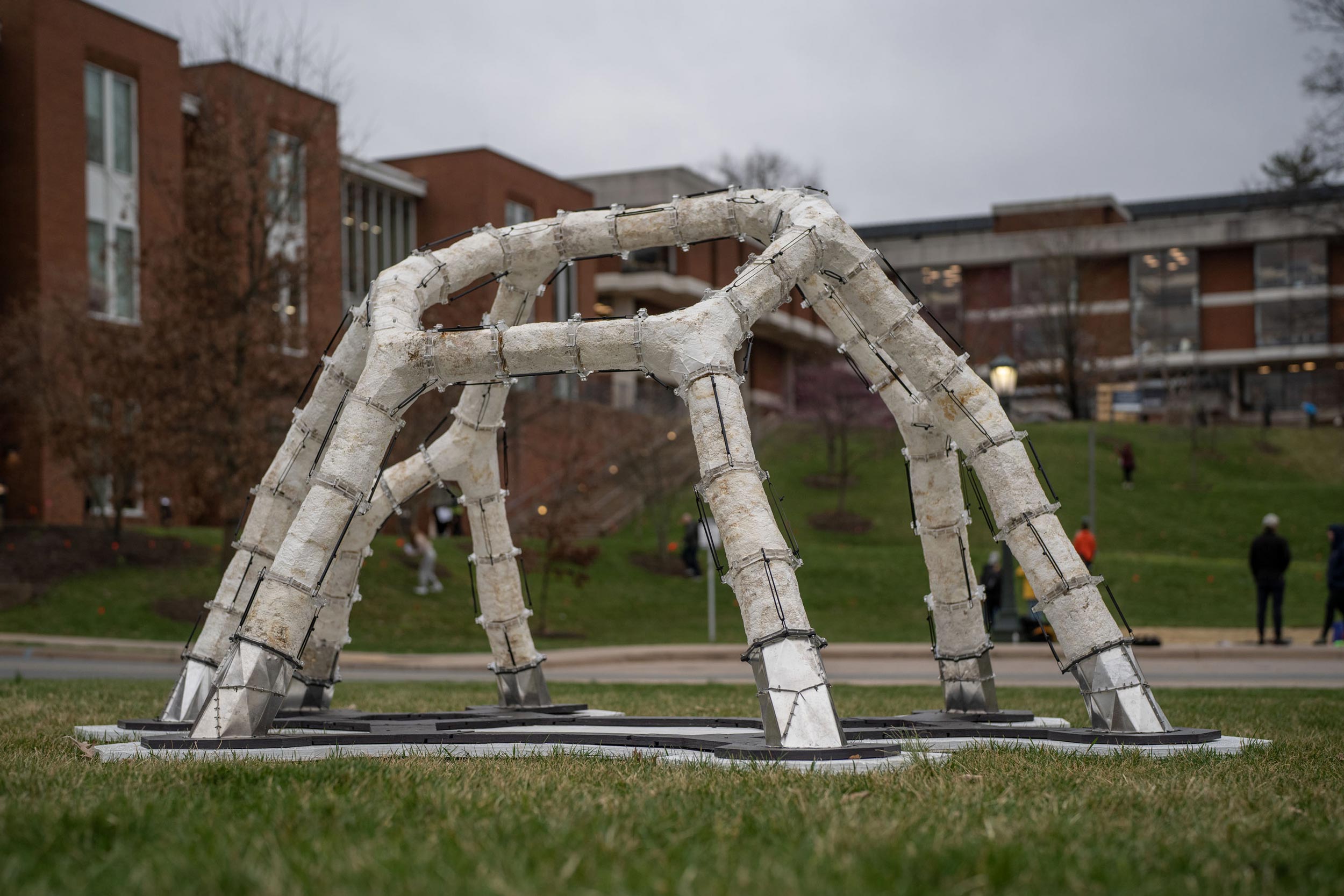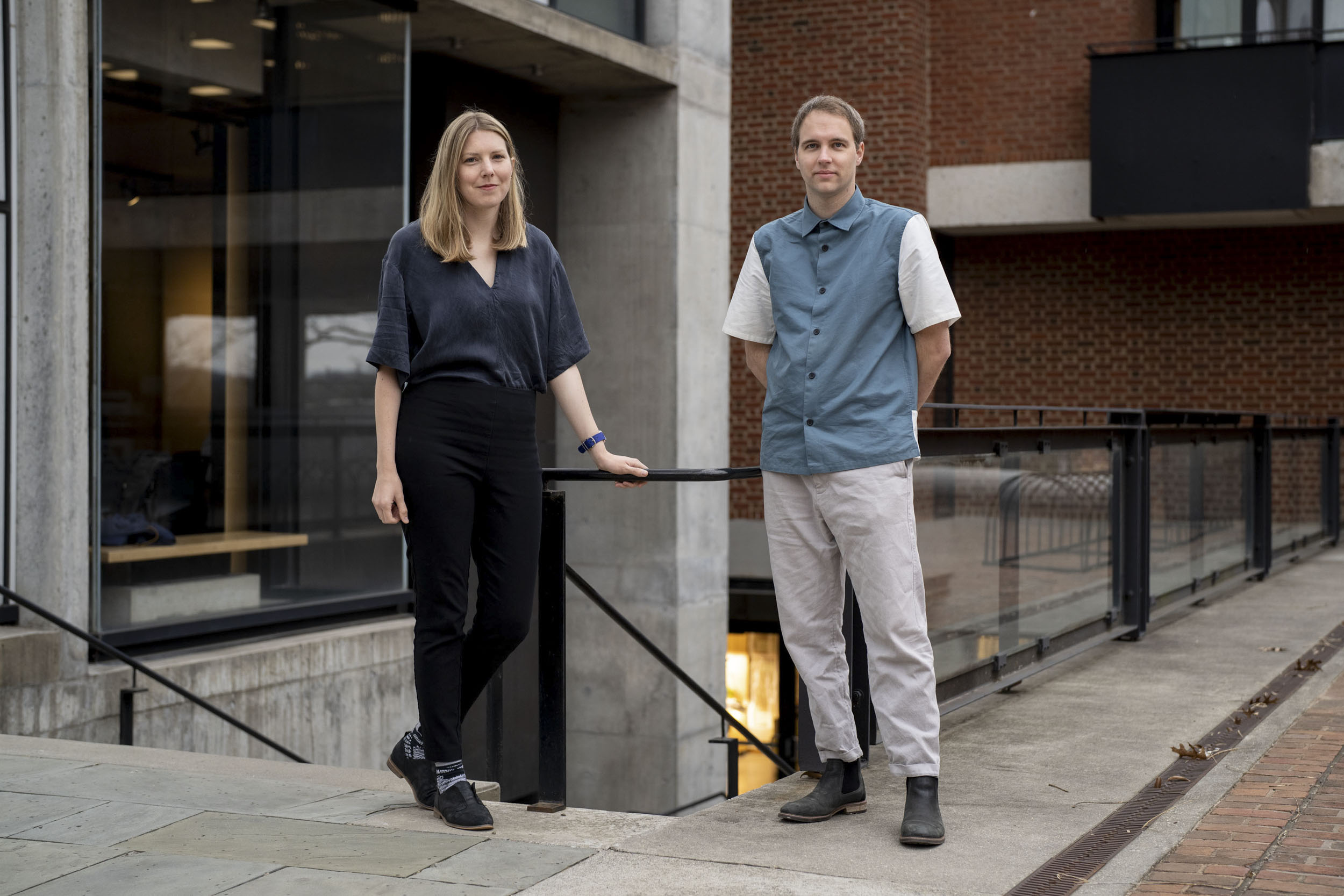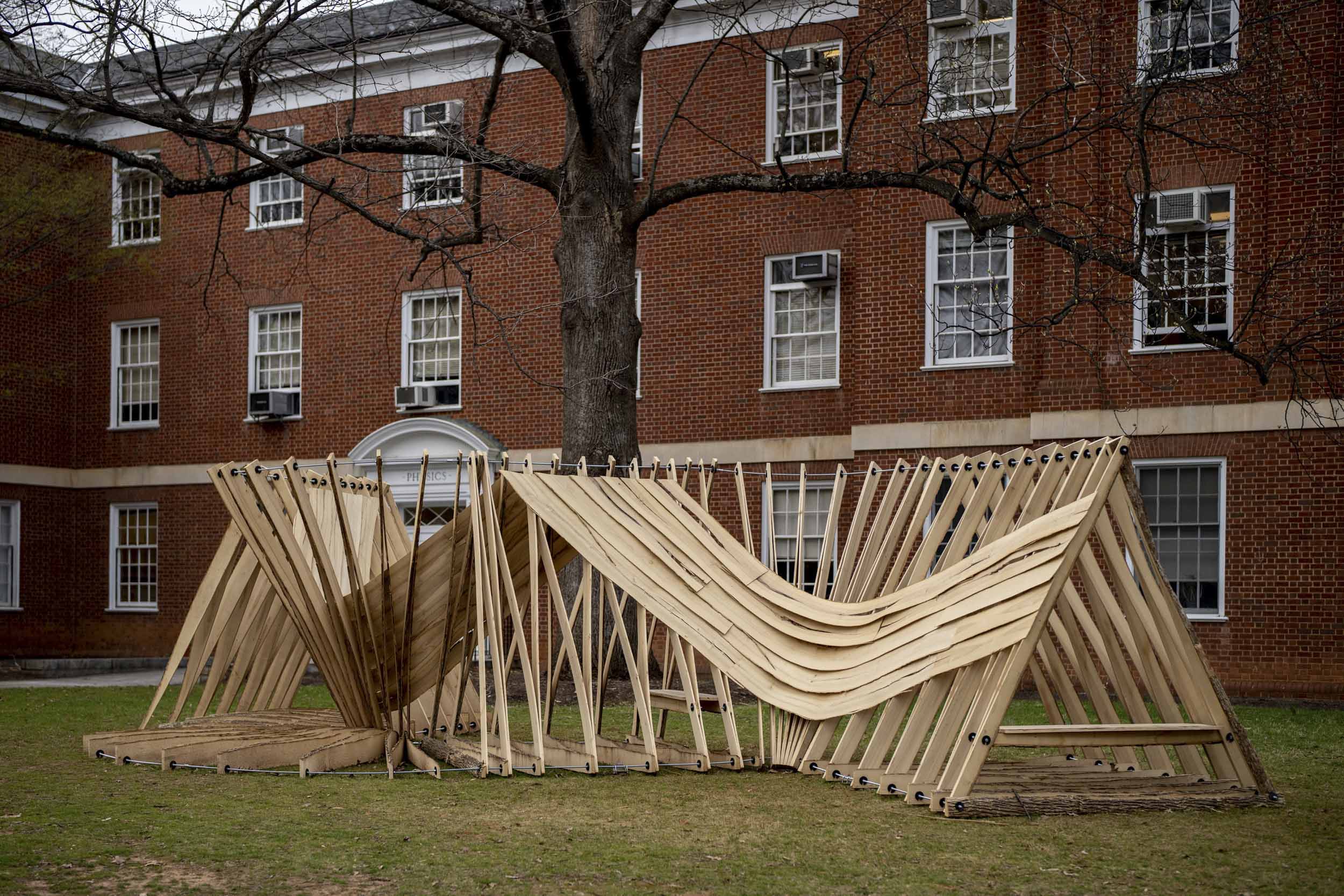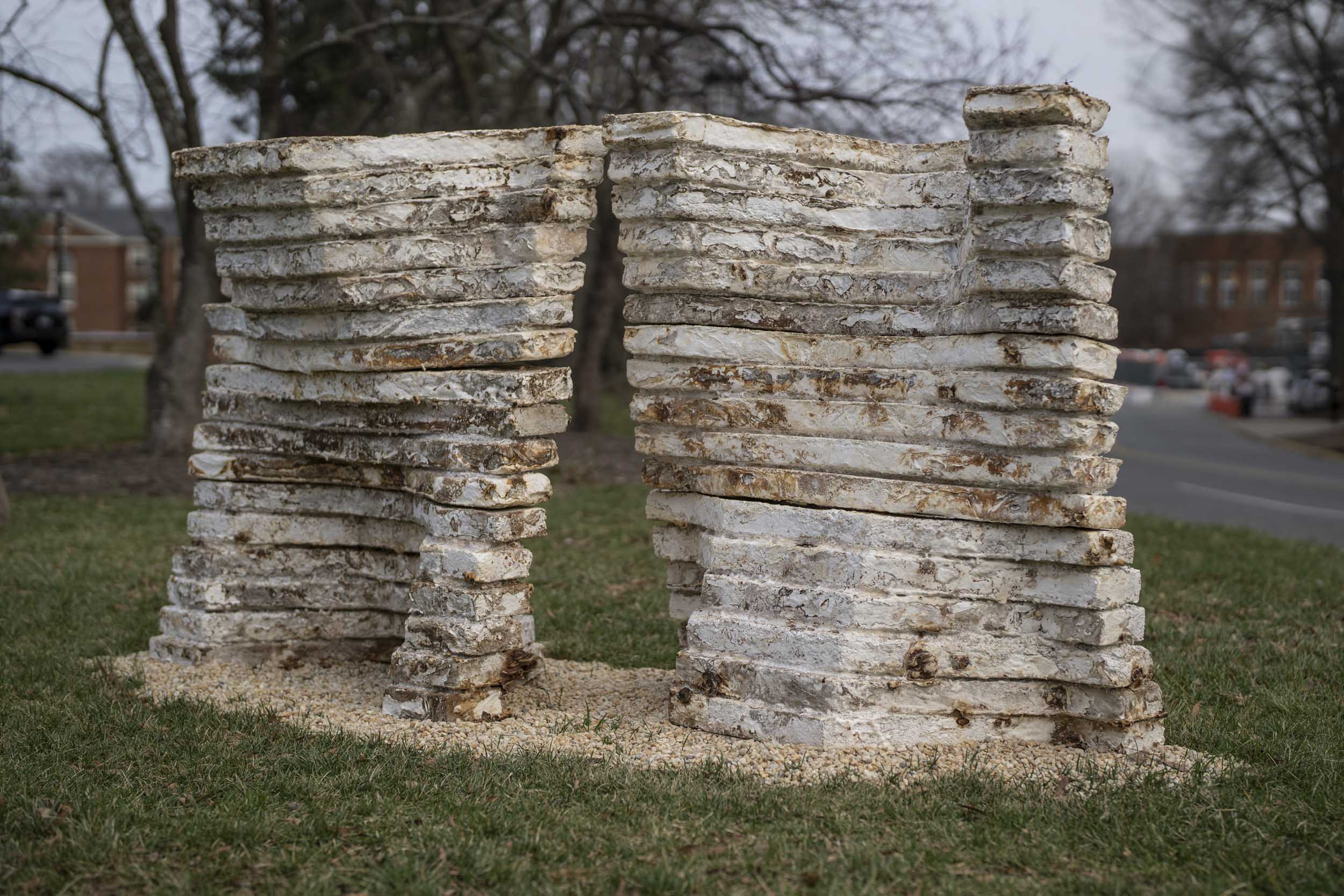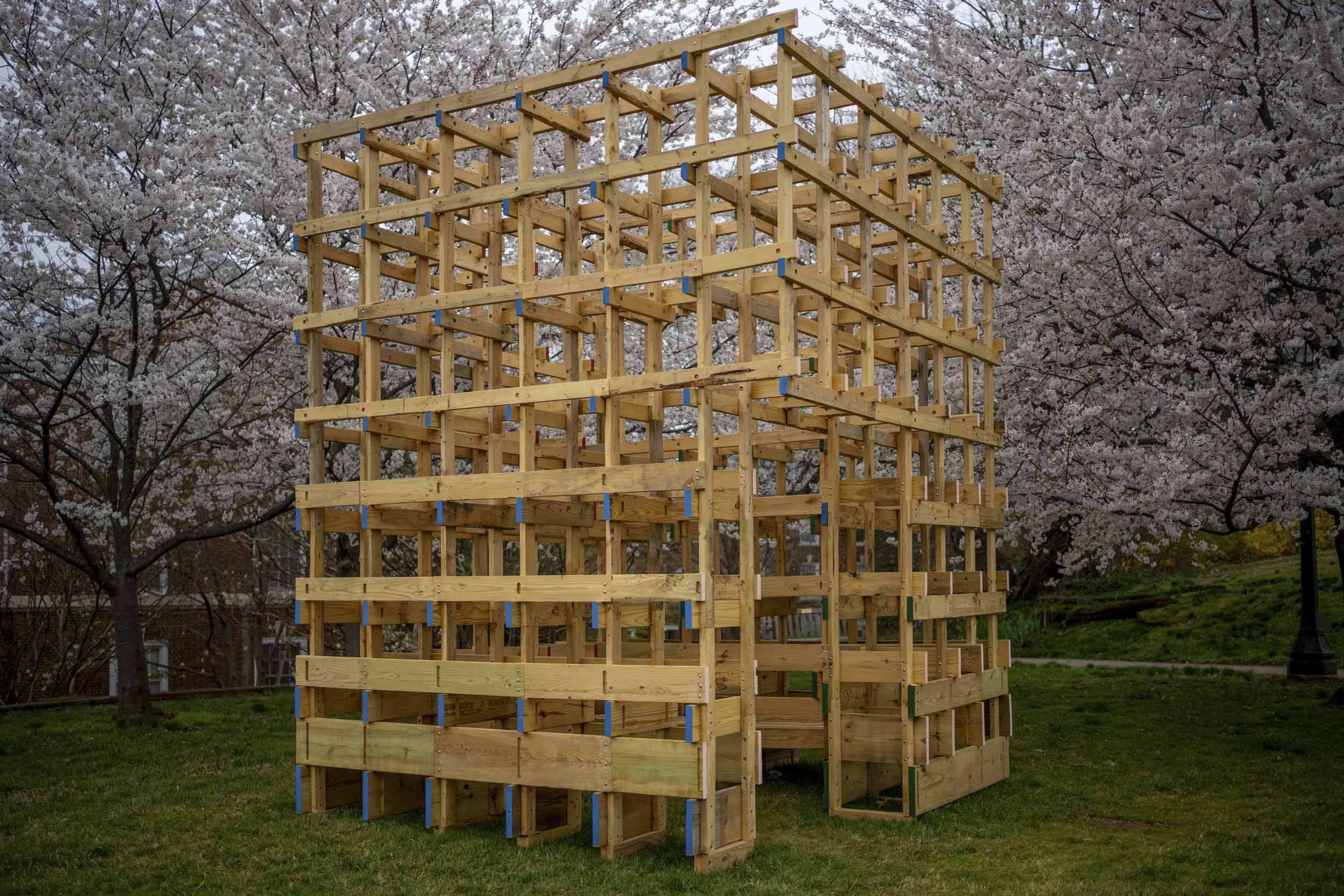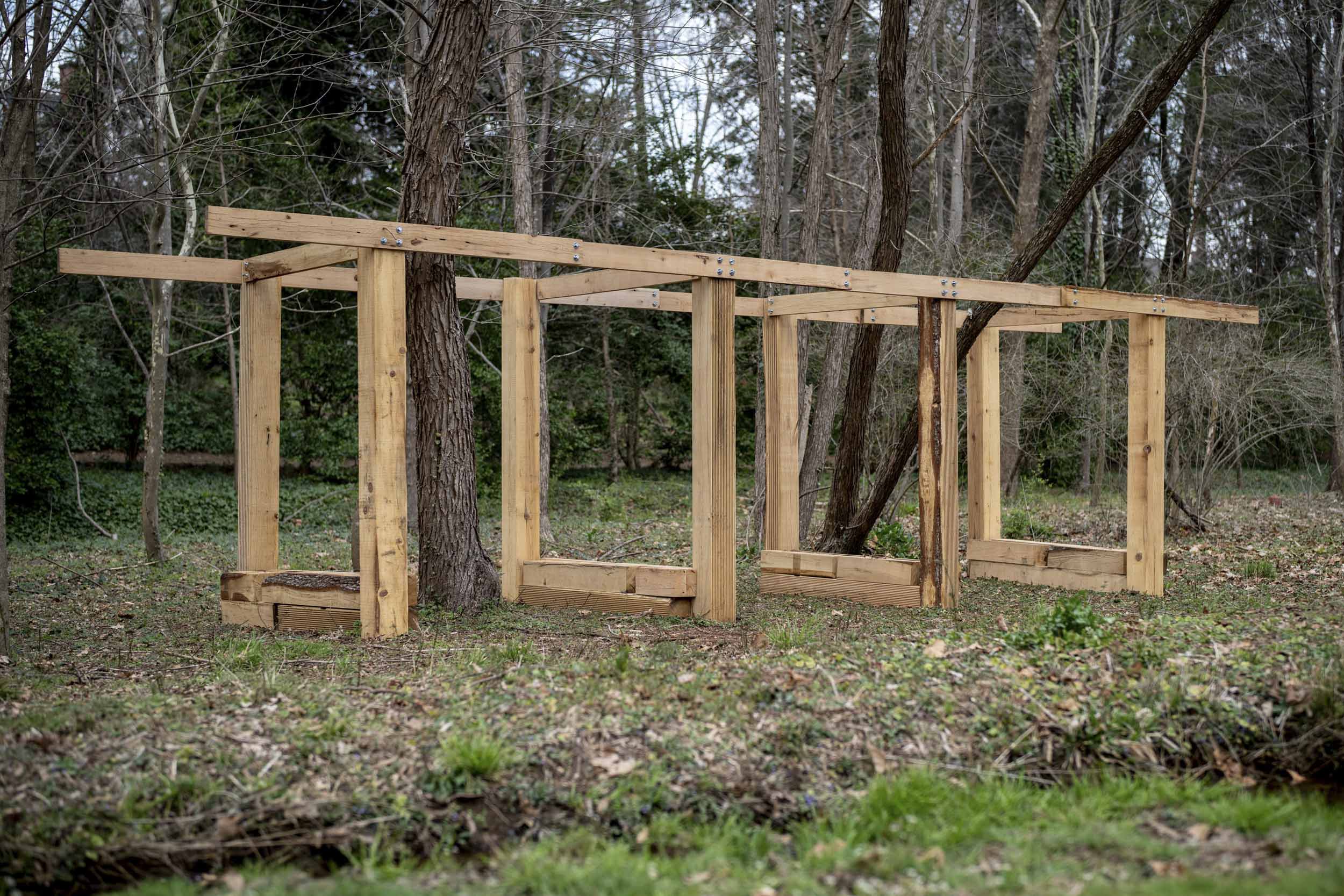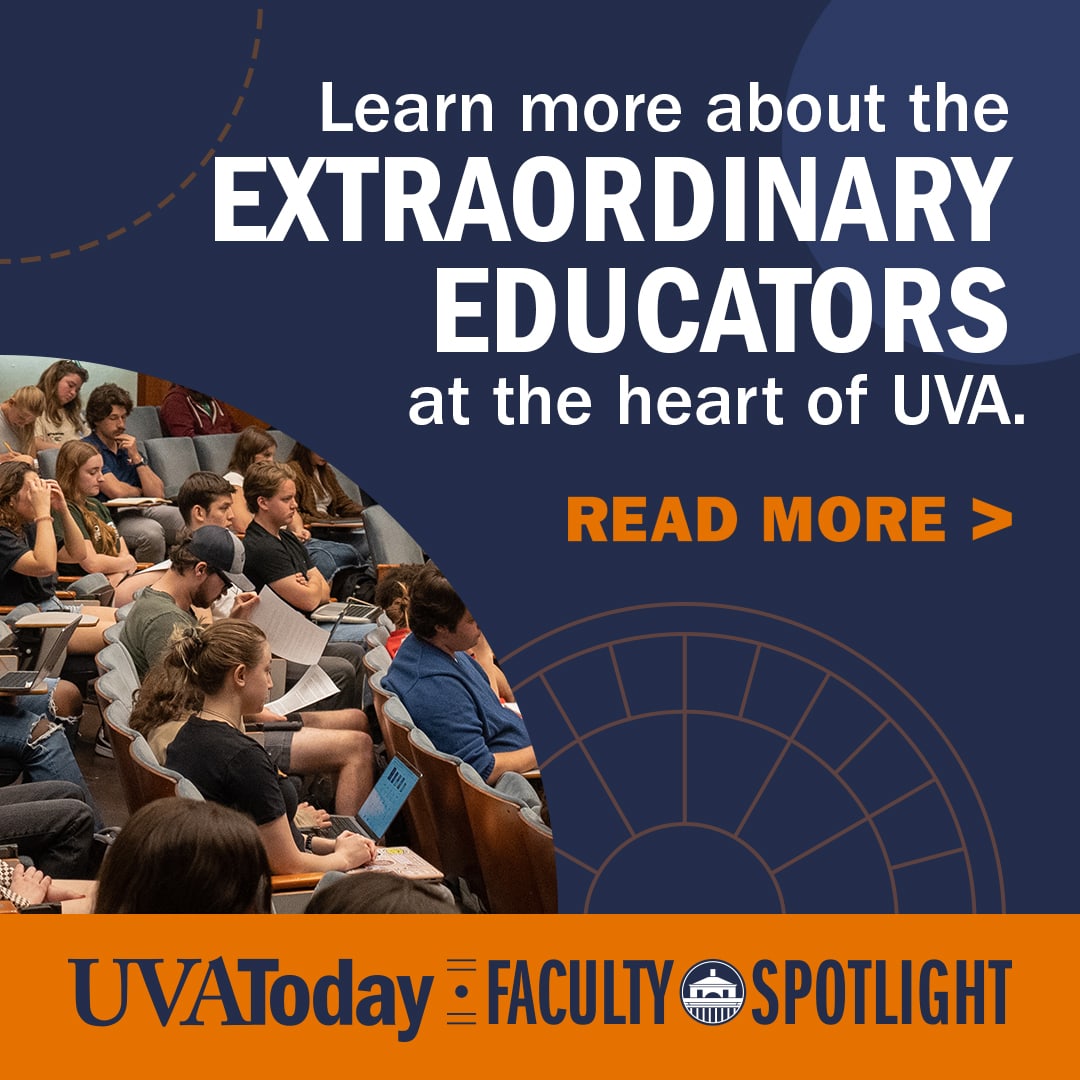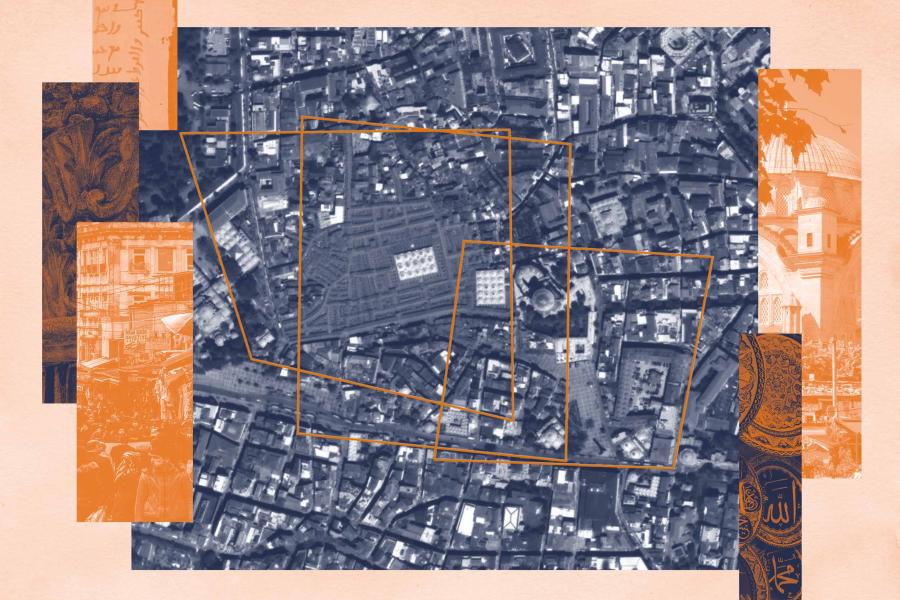University of Virginia students may have noticed the addition of some unusual structures around Grounds this spring, some of them sculptural and artsy, but all making a greater point about what can be done with innovative or underused materials.
The Biomaterial Building Exposition, with installations outdoors and in the School of Architecture’s Elmaleh Gallery, examines organic-based building materials – everything from salvaged lumber to mycelium, a fungal structure not unlike the roots of plants.
Organized by UVA assistant architecture professors Katie MacDonald and Kyle Schumann, the expo features the creations of visiting scholars, biomedical engineering researchers and UVA students.
“It is both old-school and new-school,” MacDonald said. “A lot of the work we are doing is looking at source material like vernacular architecture – building traditions that are pre-industrialization. But we’re also looking at how new technology allows us to use grown materials in new ways.”
MacDonald and Schumann began organizing the expo last year. They brought to Grounds several visiting scholars who are experimenting with different materials for a January term course on biomaterial building, and they matched the scholars with students who acted as managers of the displays for the expo.
